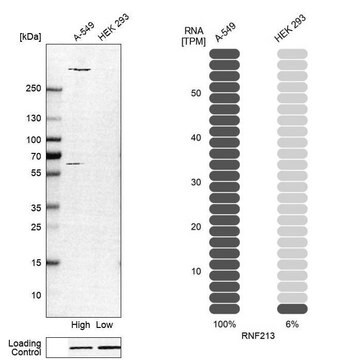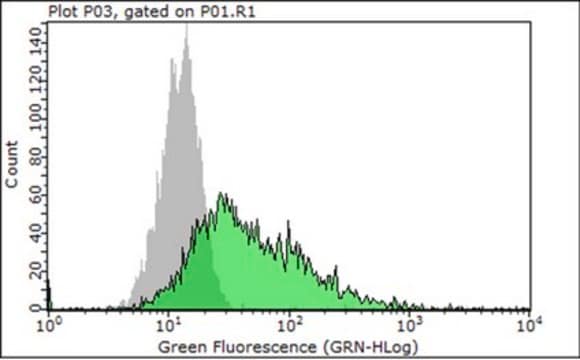MAB1059
Anti-Pigment Epithelium Derived Factor Antibody, clone 10F12.2
clone 10F12.2, Chemicon®, from mouse
Synonym(s):
pigment epithelium-derived factor, proliferation-inducing protein 35, serine (or cysteine) proteinase inhibitor, clade F (alpha-2
antiplasmin, pigment epithelium derived factor), member 1, serpin peptidase inhibitor, clade F (alpha-2 antiplasmin
About This Item
Recommended Products
biological source
mouse
Quality Level
antibody form
purified immunoglobulin
antibody product type
primary antibodies
clone
10F12.2, monoclonal
species reactivity
human
species reactivity (predicted by homology)
rat
manufacturer/tradename
Chemicon®
technique(s)
ELISA: suitable
immunocytochemistry: suitable
immunohistochemistry: suitable
western blot: suitable
isotype
IgG2a
NCBI accession no.
UniProt accession no.
shipped in
wet ice
target post-translational modification
unmodified
Gene Information
human ... SERPINF1(5176)
General description
Specificity
Immunogen
acids 196-347 of human PEDF tagged with GST on the N-terminal was expressed in E. Coli. GST-PEDF is about 46 kDa on SDS-PAGE.
Application
Neuroscience
Neurochemistry & Neurotrophins
Recognizes a protein with a molecular weight of ~46 kDa when tested against immunogen. Western blot positive control is available (Catalog number AG672)
ELISA:
A previous lot of this antibody was used on ELISA.
Immunocytochemistry:
A previous lot of this antibody was used on Immunocytochemistry.
Immunohistochemistry:
A previous lot of this antibody was used on frozen sections.
Optimal working dilutions must be determined by end user.
Quality
Western Blot Analysis:
1:1000 dilution of this lot detected pigment epithelium on 10 μg of human placenta lysate.
Target description
Physical form
Storage and Stability
Analysis Note
Eye tissue.
Other Notes
Legal Information
Disclaimer
Not finding the right product?
Try our Product Selector Tool.
recommended
Storage Class Code
10 - Combustible liquids
WGK
WGK 2
Flash Point(F)
Not applicable
Flash Point(C)
Not applicable
Certificates of Analysis (COA)
Search for Certificates of Analysis (COA) by entering the products Lot/Batch Number. Lot and Batch Numbers can be found on a product’s label following the words ‘Lot’ or ‘Batch’.
Already Own This Product?
Find documentation for the products that you have recently purchased in the Document Library.
Our team of scientists has experience in all areas of research including Life Science, Material Science, Chemical Synthesis, Chromatography, Analytical and many others.
Contact Technical Service






